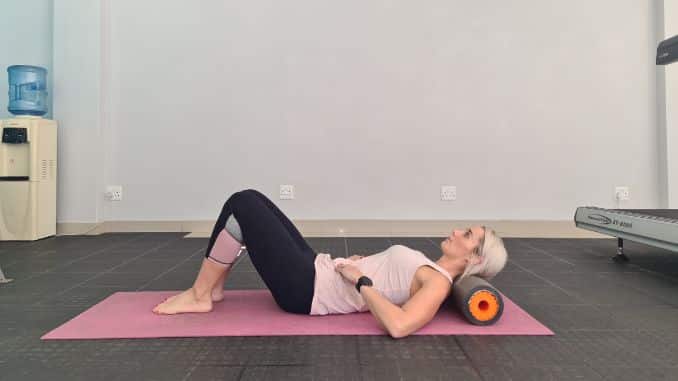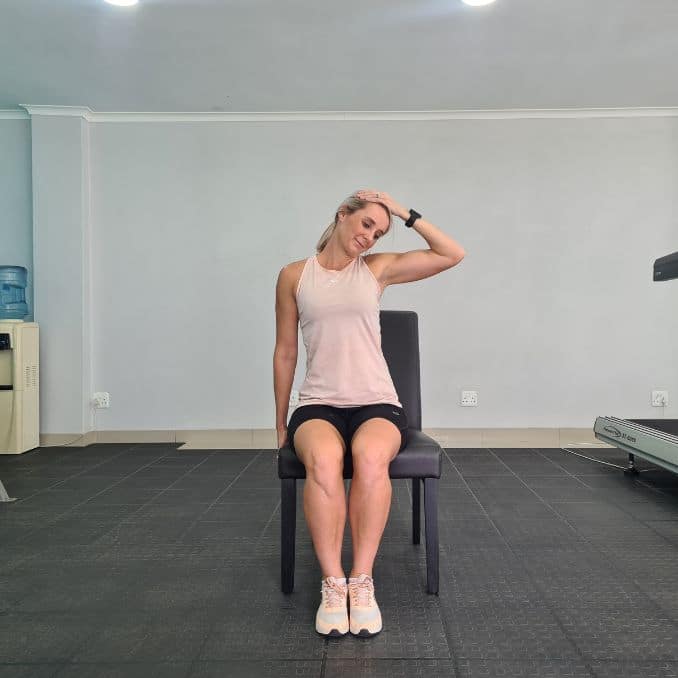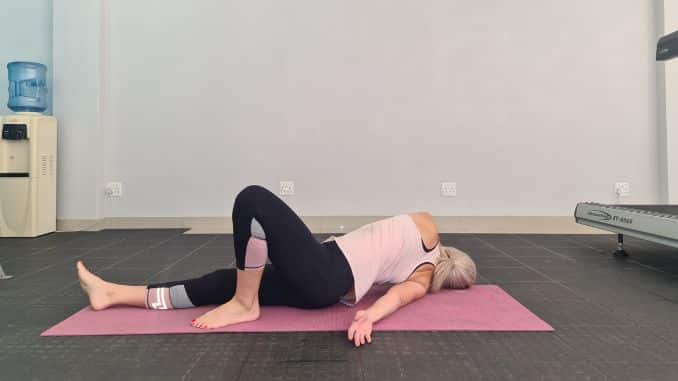From the commute to long working hours, sitting at a computer or lifting heavy objects, and going back home from a busy schedule every day could be tiring and stressful. These daily activities add tension to our muscles, especially in the neck and shoulder. Often, we don’t pay much attention to this as it is common and has become a normal part of our well-being. It is not until this muscle tension builds and develops into chronic pain or more severe that we take action to treat it.
What is Neck and Shoulder Tension?
Let us first understand what our muscles consist of and how it works to move. Our muscles are composed of fibers. These fibers slide and glide on top of each other to initiate and create a movement, such as raising our arms, lifting our feet, moving the head, and more. Every time we move, these muscle fibers are activated. With many repetitive movements every day and adding the weight we usually carry, this can greatly affect the ability to activate and deactivate muscle fibers, thus becoming impaired. Stress can also contribute to this as the hormones generated during worrying, frustration, and mental pressure causes the fibers to be hyperactive permanently, which increases the severity of the tension.
When this happens for a long time, the muscle fibers forget or stop responding to the brain’s signal to relax or deactivate. The muscle fibers stay active and contract. That’s when what we call trigger points or small knots in the muscles develop. These trigger points and small knots block the smooth sliding and gliding motion of the muscle fibers, causing sticky jump movements. These uncoordinated movements create increased friction that results in micro tears, inflammation, pain, and if left untreated, muscle injury.
Causes of Neck and Shoulder Tension
You may be unaware of the things that cause your muscle tension which could include the ones you normally do every day. This includes repetitive movements, poor posture, poor ergonomic workstation, poor sleeping position, lifting heavy loads, and stress.
Symptoms of Neck and Shoulder Tension
Excessive tension of the neck and shoulder may have symptoms such as the following:
- Elevated Shoulders
The muscles are shortened when it is under prolonged tension; this causes the gap between the neck and the shoulders to be significantly smaller too. It could happen on one side or both, and sometimes the dominant hand is higher than the other because it works harder than the other.
- Slouched Back
If one group of muscles, like the shoulder, struggles, the muscles that are near or surrounding it start to compensate too. The chest and front shoulder muscles take this responsibility, resulting in a slouched or hunched back. This muscle imbalance can also be called an upper crossed syndrome.
- Limitation of Neck and Shoulder Motion
The muscle tension we feel on our neck and shoulder directly affects our ability to move it in a full range of motion. We often have difficulty turning or tilting our heads and raising our arms.
Treatments for Neck and Shoulder Tension
Neck and shoulder tension can be relieved with conservative treatments. Here are some of the following:
A. Rest
Allowing your muscles to relax for a day or two reduces the tension.
B. Warm compress/Heat therapy
Apply a hot pack on the tight area for 10-20 minutes. Ensure that you check the area every 5 minutes for redness to prevent burns. This increases blood flow to the area, promoting a faster healing environment.
C. Massage and Exercise
Several massage techniques and exercises could relieve muscle tension. A Physical Therapist could guide you to the appropriate exercises needed.
5 Simple Ways to Relieve Neck and Shoulder Tension
Neck and shoulder tension can have a great impact on our daily lives. Fortunately, we have 5 simple techniques to relieve and loosen up neck and shoulder tension caused by shortened tissues. This includes lengthening shortened muscle fibers to increase blood flow to facilitate healing in the areas with small knots. This could reduce inflammation and pain. We then move to teach the muscles to respond to relaxation signals sent by the brain.
1. Foam Roller Roll Out
Lie down with the foam roller under your neck, just above your shoulders. Slowly move up and down, targeting the trigger points as if to massage it. Do this repeatedly for 1-2 minutes. Then, do it on your back and shoulders too.
2. Side Neck Stretch
Comfortably sit on a chair. Put your right hand, palm touching the left side of your face, then slowly pull your head towards your right, then stop when you feel a gentle stretch on the left side of your neck. Hold for 30 seconds, do it 3 times. Then repeat it on the opposite side.
3. Forward Neck Stretch
Comfortably sit on a chair. Put both of your hands at the back of your head, then slowly pull your head down, then stop when you feel a gentle stretch on your back neck muscles. Hold for 30 seconds, do it 3 times.
4. Eagle Arms Pose
Comfortably sit in a chair, or you can do this while standing. Put your right elbow on top of the other arm, then wrap your hands around with your palms touching. Relax your shoulders, then lift your elbows away from the chest and gently draw your hands away from your face. Do this for 1-2 minutes, then do the opposite arm.
5. Supine Cactus
Lie on your back. Slowly twist your upper body and arm extended on the right side until your chest is in contact with the floor. Start rolling out your hips as you keep your head, neck, and right shoulder relaxed. Hold for 1-2 minutes. Repeat on the other side.
6 Tips to Prevent Neck and Shoulder Tension
Although several treatments are available to relieve neck and shoulder tension, it is always a good idea to prevent it from occurring again. This both saves you time and prevents acquiring muscle injury that may need a comprehensive assessment and treatment.
1. Ergonomic Workstation
Since you are going to spend at least 8 hours a day, 5 times a week, in your workstation, you can adjust it to reduce the stress it could give your muscles. Your computer should be at eye level, not too high and not too low. Adjust the height of your chair, desk, and computer until you feel that your muscles are relaxed in this area, providing neck and shoulder tension relief. A standing desk may also be an option.
2. Good Posture
It may be difficult always to be aware of your posture when sitting and standing. However, improving this could prevent or reduce the tension in your muscles. The key to a good posture is to maintain the three curves of the spine, your neck, mid back, and low back. Your hips, shoulders, and ears should be aligned with each other when standing, promoting neck and shoulder tension relief.
3. Take a Break, Stand or Stretch
While working or traveling for a long period, try to stand and stretch as much as you can to relax your muscles. This doesn’t only benefit you physically but also mentally, as this can relax your mind too. Regular breaks with neck and shoulder stretches can provide much-needed relief from tension and promote overall well-being.
4. Improve Sleeping Position
If you stay in a position for too long when sleeping, your muscles may become stiff. You can put pillows between your knees when side lying, put pillows on your back when in the supine position, and put pillows on your belly when you are in a prone position. This could help align your body naturally without putting too much stress on your muscles.
5. Take some weight off your shoulders
Reducing the weight you carry on your shoulders reduces the burden placed on it, leading to neck and shoulder tension relief. For example, instead of backpacks, you may use a rolling bag instead. Or remove unnecessary things inside your bag to lessen its weight and can therefore be easily carried.
6. Start Exercising
Moving your body could release the tension in the muscles. Starting an exercise program, whether 10-20 mins every day, helps you keep it in good condition.
Takeaway
Neck and shoulder tension is common that could affect almost everyone. It is not life-threatening and can be resolved over time with conservative treatment. Although the pain you experience with muscle tension is manageable by conservative treatments such as rest, stretching, and exercise, it is always better to take prevention so that it won’t develop into a more severe condition in the future. Meanwhile, if you have tried these treatments and the pain doesn’t go away, it is best to consult your doctor to assess the cause of it and therefore plan an appropriate treatment for it.







